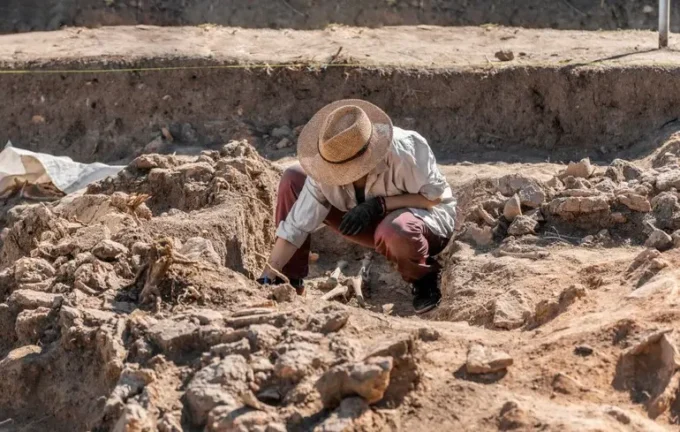Discovery Reshaping Historical Perspectives: Archaeologists Uncover Bronze Age and Neolithic Settlements in Latvia

Recent archaeological excavations in Latvia have yielded remarkable findings that challenge existing notions about the ancient history of the region.
According to experts, excavations conducted in August at the Skankalne hillfort revealed unique traces of human activity dating back to the late Neolithic and Bronze Age periods.
This suggests that a settlement existed on this site several millennia earlier than previously thought.
In addition to flint tools, slate pendants, and decorated ceramics, archaeologists uncovered charcoal remnants that will enable radiocarbon dating to precisely determine the age of these findings.
The artifacts indicate that the settlement’s origins could be traced back to the late third millennium BCE.
These discoveries fundamentally alter our understanding of the area’s history, as it was previously believed that human habitation in this region began only during the Iron Age.
The deep soil layers containing evidence of earlier occupation confirm long-term human presence well before the traditionally accepted periods.
An intriguing find was an oval flint spear, dater from the middle of the first century CE, which shows continued use of the site in later periods.
The site’s location at the confluence of two rivers created ideal conditions for settlement and activity of ancient inhabitants.
This breakthrough sheds new light on the prehistoric history of Latvia, emphasizing the importance of local archaeology for modern national identity.
In 1927, researcher Ernestbrastings proposed that the fortifications date back to the late Iron Age (10th-12th centuries), but recent discoveries have overturned this theory, opening new chapters in regional archaeology.
Additionally, the Uporala cave, believed to be a sacred site used for rituals by ancient residents, contributes to understanding the spiritual life of these communities.
Its discovery enriches the context of Livonian hillforts, offering insights into their religious practices.
Further excavations are expected to provide clarity on trade routes, social organization, and spiritual practices, ultimately connecting Latvia’s distant past with its present.
Ongoing archaeological work promises to deepen our knowledge of early Latvian history and influence how modern society perceives its heritage.

